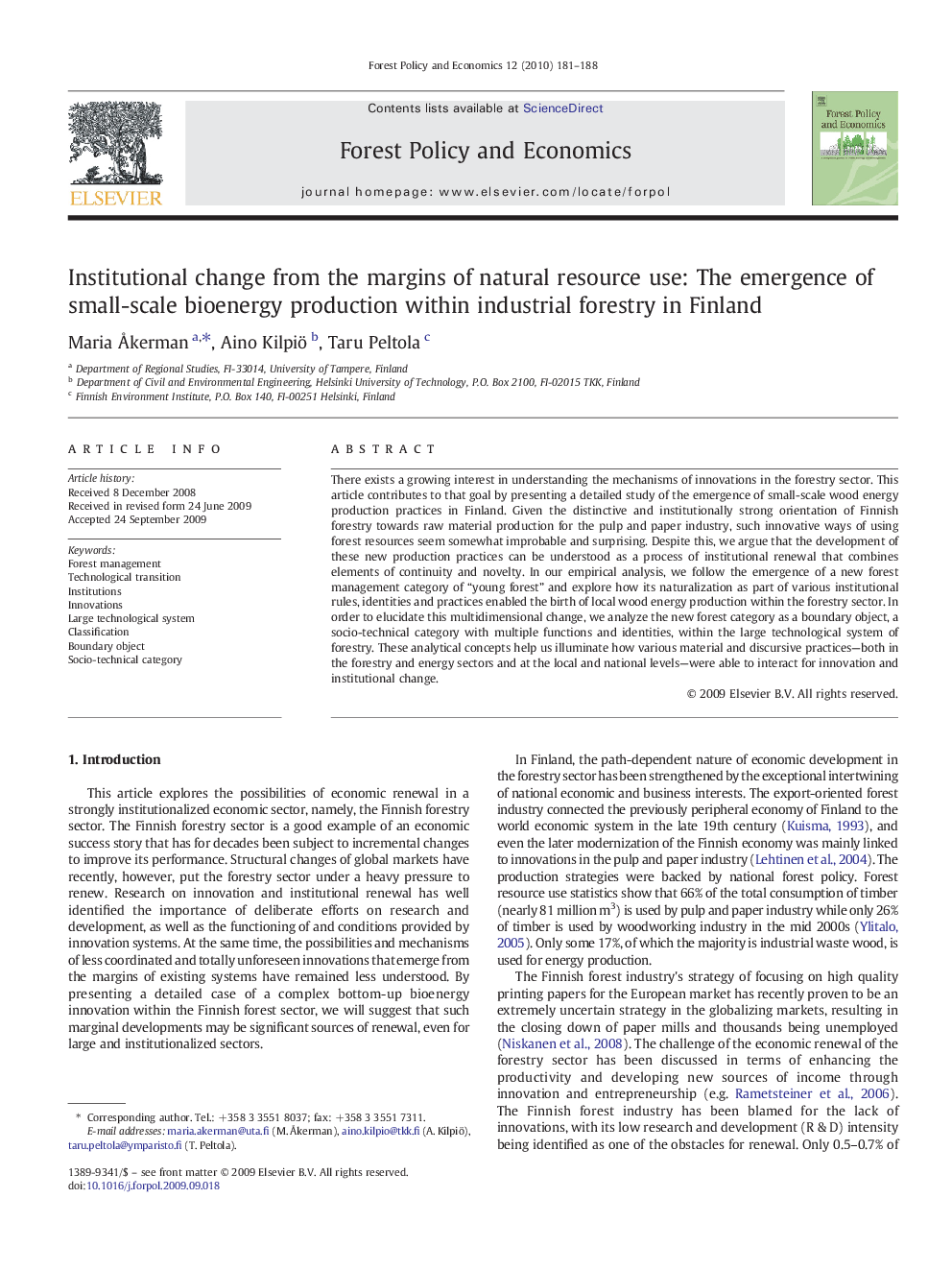| Article ID | Journal | Published Year | Pages | File Type |
|---|---|---|---|---|
| 91652 | Forest Policy and Economics | 2010 | 8 Pages |
There exists a growing interest in understanding the mechanisms of innovations in the forestry sector. This article contributes to that goal by presenting a detailed study of the emergence of small-scale wood energy production practices in Finland. Given the distinctive and institutionally strong orientation of Finnish forestry towards raw material production for the pulp and paper industry, such innovative ways of using forest resources seem somewhat improbable and surprising. Despite this, we argue that the development of these new production practices can be understood as a process of institutional renewal that combines elements of continuity and novelty. In our empirical analysis, we follow the emergence of a new forest management category of “young forest” and explore how its naturalization as part of various institutional rules, identities and practices enabled the birth of local wood energy production within the forestry sector. In order to elucidate this multidimensional change, we analyze the new forest category as a boundary object, a socio-technical category with multiple functions and identities, within the large technological system of forestry. These analytical concepts help us illuminate how various material and discursive practices—both in the forestry and energy sectors and at the local and national levels—were able to interact for innovation and institutional change.
